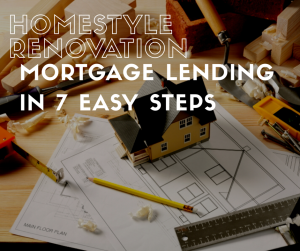Fannie Mae is Americas largest secondary lender. The FNMA HomeStyle loan is designed for investors and owner-occupant buyers as an alternative to the FHA 203(k) loan, as well as for second home buyers.
The HomeStyle loan is a Fannie Mae (FNMA) loan that basically allows an investor to purchase a property and include the renovation costs into the mortgage. It’s quite similar to a hard money loan, but the significant difference is that the loan is a permanent loan (15 or 30-year fixed).
Here is the most basic example to wrap your head around the idea of this product:
*Sale Price: $100,000 * Renovation Budget: $25,000 * Total Investment Needed: $125,000 * 80% LTV, 30-Year Fixed Mortgage* * Traditional Mortgage Rate (5% +/- in 2015) * Loan Amount (80% of $125k): $100,000 * Cash Down Payment: $25,000 * Escrow Account Setup for $25,000 in Renovation * Great Property, Fixed, for 20% Cash Investment Versus: * Hard Money Loan * $125,000 Total * 70% LTV * $37500 Cash Needed
Intrigued? Of course you are! As a smart real estate investor, your always looking for new ways to improve your property. Whether you’re an investor who prefers to pay all cash for your real estate investments or one who uses financing to buy the property and pay cash to fix it up, it’s important you consider all your options.
We took the liberty of breaking down the HomeStyle Loan Process into 7 easy steps:
First, find a qualified Fannie Mae HomeStyle lender
It’s important to note that not all lenders or mortgage brokers are qualified or set up to provide the HomeStyle mortgage. It takes quite a bit more staff and processes for the lender to be able to provide these. Make sure it is a lender that you feel comfortable working with. This is a process.
Second, put a house under contract.
Restrictions: Not many. It should need some repairs, at least enough to justify this process and a couple of extra costs. What can it need? Just about anything. Windows, yes. Doors, yes. Bathroom, yes. Kitchen, yes. Roof, yes. An addition onto the back of the house? Even for this, yes.
Third, get a Contractor and an inspection (required by most HomeStyle lenders).
Most contracts permit a 10-day inspection period or other amount of time that is negotiated to have a professional inspection. This can be money well spent to make sure that you have located all or most of the necessary renovation items that you will need to take care of during the process. A qualified inspector can make reasonable suggestions on what and how to repair certain items.
The most important role of the renovation contractor is to help you develop a Scope of Work (SOW), also called the Scope Of Repairs (SOR), so that’s there a plan of work documented for the house and an itemized repair budget. This is to prove that necessary items will actually bring it to a livable condition.
Fourth, hand the documents to your lender, then your hard part is done. It’s a time process now.
Some of the next steps include an appraisal that is ordered and managed by the lender or mortgage broker. Rather than a traditional appraisal, they are going to appraise the property based upon “subject to repairs” or the “After Repaired Value” (ARV). This is important to the lender and to you in order to justify that the cost plus renovation do not exceed the value of the property repaired.
Fifth, you’ll get the Feasibility Study performed. Don’t worry, you don’t need to study
This is where we come in…as HUD certified consultants, we are qualified to assist you in FannieMae HomeStyle Renovation. The validation of the SOW/SOR is done by the us, this is called the Feasibility Study. The Feasibility Study justifies that the set of repairs will bring the property to a livable and safe condition. They will also validate the cost of each of the items being repaired in accordance with market prices.
Sixth, underwriting takes place.
Once all of the documents have been received for the loan, the lender will underwrite the loan for final approval. Additional questions are regularly made at this point, and then the loan is set for approval.
Seventh, you’re ready to close!
Once everything has been done with this process, which typically takes 10 days and sometimes longer, you are ready to close on the sale. The closing will take place as usually set up in the state of the property. An escrow account is set aside with the lender for the renovation proceeds. Instructions will be given, and additional contacts will be presented for the duration of the process.
It’s up to you and/or your contractor to start the renovations as outlined. Initial funding must come from other resources. The lender will NOT give you starter funds for the renovation
Using this process instead of a traditional turnkey investment property typically yields a better equity position. If you can renovate the property to be worth $135,000 for the cost of $125,000, you just made $10,000 in equity. This is where our clients have shined.
As an investor, whether you’re using this flip a house, or using this to keep the property as a rental, this can be a great way to impact your cash on cash returns, minimize the number of loans taken out on the property, and maximize your buying power.


















Leave A Comment